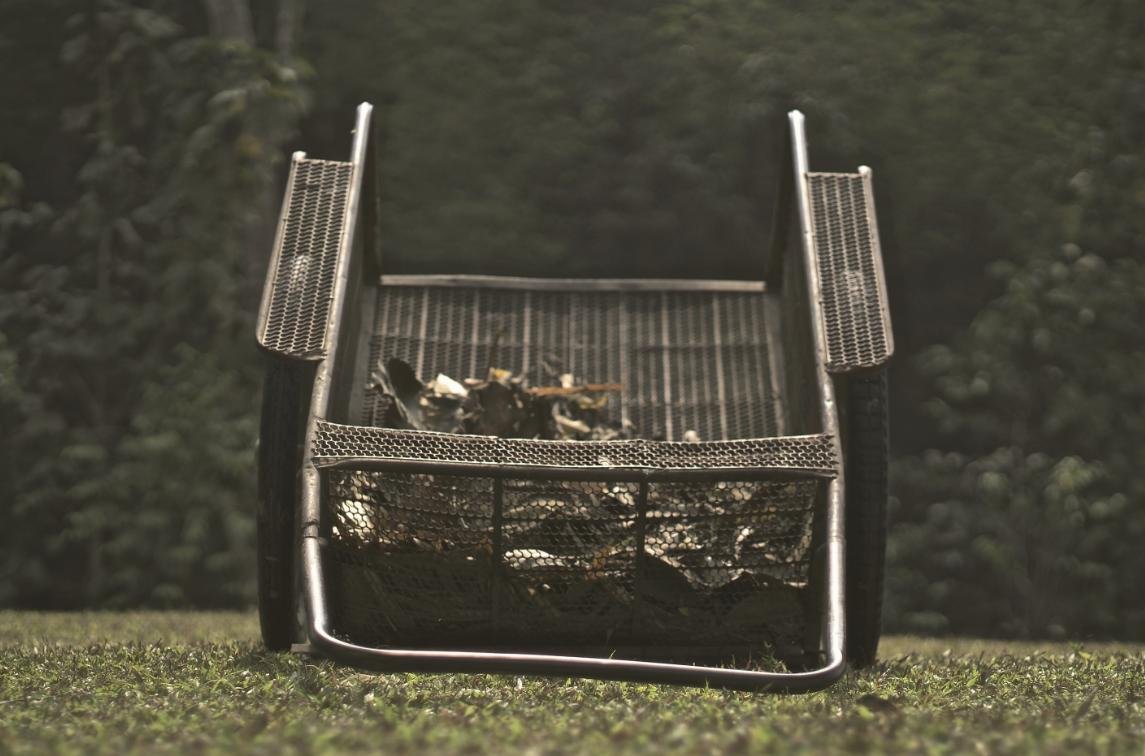Understanding the Garden Dump Cart
A garden dump cart is a versatile tool designed to facilitate various gardening tasks. Typically constructed with a durable frame and a large, open bed, these carts are primarily used for transporting materials such as soil, mulch, plants, and other gardening supplies around the yard or garden. The primary function of a garden dump cart is to make heavy lifting and transporting easier, reducing the strain on the gardener’s back and muscles.
One of the significant advantages of using a garden dump cart is the efficiency it brings to project completion. Gardeners often find themselves moving large quantities of materials, and the capability of a dump cart to carry a considerable load reduces the number of trips required. Additionally, many models come equipped with a dumping feature, allowing users to unload their materials effortlessly at the desired location, enhancing productivity.
There are various types of dump carts available on the market, and understanding their features can guide one to the right choice. For instance, some carts are designed for specific tasks, such as transporting heavy rocks or large loads, while others may be more suited for lighter items such as leaves or garden debris. The capacities of these carts often vary, with some holding up to 1,000 pounds, while others might be better suited to carrying around 300 pounds. Furthermore, garden dump carts can come with different wheel styles—pneumatic or solid—and differing handle designs, each contributing to the ease of use and maneuverability.
Investing in a garden dump cart is a decision that can greatly enhance the gardening experience by making transport easier, increasing productivity, and ultimately improving the enjoyment of outdoor activities. By selecting the appropriate model that meets one’s specific needs, gardeners can ensure that they are better equipped for various tasks throughout the gardening season.
Regular Inspection and Maintenance Routine
Maintaining a garden dump cart is crucial for ensuring its longevity and efficiency. Establishing a regular inspection and maintenance routine can prevent costly repairs and enhance the cart’s performance. An effective routine is structured around regular checks and proactive measures.
To begin, it is advisable to conduct inspections on a bi-monthly basis or more frequently if the cart is heavily used. During each inspection, examine the wheels for any signs of wear or damage. Check the tread for any irregularities that may affect traction and stability. A flat or compromised tire can significantly impede performance and may require immediate inflation or replacement.
Next, assess the frame of the cart. Look for any bends, cracks, or rust which can compromise its structural integrity. If you notice any degradation, it is essential to address these issues right away, as they can lead to further complications and reduced safety during usage. Regular painting or applying a protective coating can help in preventing rust and prolonging the life of the frame.
The dumping mechanism is another critical component that demands attention. Inspect the hinges and latches to ensure they function smoothly. Any stiffness in movement can be a sign of rust or debris buildup, necessitating lubrication or thorough cleaning. Proper function of this system is vital for efficient operation, allowing for an unhindered dumping process.
Additionally, look out for any accumulated debris or dirt in hard-to-reach areas. Regular cleaning not only aids in maintaining the cart’s functionality but also prevents corrosion. By adhering to a routine inspection and maintenance schedule, you will not only enhance the performance of your garden dump cart but also significantly extend its lifespan.
Cleaning Your Dump Cart: Best Practices
Maintaining a clean garden dump cart is essential for prolonging its lifespan and ensuring optimal functionality. Regular cleaning helps to prevent rust and degradation, which can substantially reduce the cart’s effectiveness over time. A proper cleaning regimen can also contribute to better hygiene in the garden, minimizing the transfer of pathogens or pests between different plants.
To effectively clean your garden dump cart, you will need a few basic materials. Gather the following items: a stiff-bristled brush, biodegradable soap, a water source, and a sponge or cloth. Additionally, having a hose can greatly assist in rinsing off the cart and removing any stubborn residues. Utilizing biodegradable soap is crucial, as it provides a gentle yet effective cleaning solution that is safe for both your garden and the environment.
Begin the cleaning process by tipping the cart, allowing any debris accumulated during use to fall out. Using the stiff-bristled brush, scrub the interior and exterior surfaces of the cart, focusing on areas that may have come into contact with soil, organic materials, or plant matter. These areas are prone to buildup, which can contribute to rust and corrosion if left unattended. Apply biodegradable soap to the brush for enhanced cleaning power, paying special attention to any tough stains or residues.
After scrubbing, rinse the dump cart thoroughly with water, using a hose if possible. Ensure that all soap residue is washed away, as leftover soap can damage the cart’s materials over time. Once rinsed, dry the cart with a clean sponge or cloth to prevent water spots and rust. Following these best practices after each use will keep your garden dump cart in optimal condition, enhancing its longevity and performance in your gardening tasks.
Lubricating Moving Parts for Optimal Performance
Maintaining optimal performance in your garden dump cart necessitates regular lubrication of its moving parts, particularly the wheels and pivots. These components are subject to friction and wear due to daily use and exposure to various environmental conditions. Proper lubrication minimizes this friction, ensuring smoother operation and prolonging the lifespan of your cart.
When selecting appropriate lubricants, consider those specifically designed for outdoor tools and equipment. Lithium grease is a popular option for pivots due to its durability and resistance to moisture. For wheel bearings, a high-quality oil-based lubricant, such as a silicone spray or penetrating oil, is advisable. These lubricants penetrate crevices and displace moisture, which is essential for long-term performance. Ensure that the lubricants are also compatible with the materials of your cart to avoid any adverse reactions.
It is recommended to lubricate the moving parts of your dump cart at least twice a year or more frequently if the cart is exposed to harsh conditions, such as rain or extreme temperatures. A step-by-step guide for lubricating your cart is as follows:
- Start by cleaning the wheels and pivots to remove dirt and debris that can hinder lubrication efficacy.
- Apply the chosen lubricant generously to the pivots. Make sure it seeps into the joints.
- For the wheels, carefully apply lubricant to the bearings and ensure they are evenly coated.
- Rotate the wheels to distribute the lubricant, allowing it to reach all necessary areas.
- Inspect the lubricated components to confirm that they operate smoothly and adjust if necessary.
By following these steps, you will enhance the functionality of your garden dump cart, ensuring that it operates at peak efficiency for years to come. Regular maintenance in the form of lubrication is not only vital for performance but also contributes to the overall durability of your garden equipment.
Rust Prevention Techniques
Maintaining the integrity of your garden dump cart requires a proactive approach to rust prevention. Rust is primarily caused by the reaction between moisture and iron or its alloys, leading to oxidization. The factors contributing to rust formation include exposure to rain, humidity, and inadequate storage conditions. To mitigate these risks, several effective strategies can be adopted.
One of the foremost methods for rust prevention is the application of protective sprays. These rust-inhibiting coatings can create a barrier that prevents moisture from contacting the metal surfaces of the cart. Look for high-quality rust-resistant waterproof sprays that are specifically designed for garden tools and equipment. Regularly reapply these coatings, especially after prolonged exposure to the elements, to ensure lasting protection.
Proper storage plays a crucial role in rust prevention. When not in use, it is advisable to store your garden dump cart in a dry, sheltered area. If possible, use a garage or shed that is protected from the elements. Additionally, consider placing the cart on a raised platform or using a tarp to prevent direct contact with the wet ground, which can accelerate rust formation. Covering the cart with a waterproof tarp when parked outside is another simple yet effective technique for reducing exposure to moisture.
If you discover existing rust on your garden dump cart, prompt action is necessary to prevent further damage. Start by scraping off the rust with a wire brush or sandpaper until the affected area is clean. Following this, apply a rust remover or converter product to halt the oxidation process. Finally, finish your restoration by applying a protective coat or paint to the treated area, ensuring the longevity of your cart against future rust development.
Repairing Common Issues with Your Dump Cart
Maintaining the efficiency and longevity of your garden dump cart is essential for any avid gardener. However, like any piece of equipment, dump carts can face a variety of common issues that may hinder their performance. Identifying these problems early on can save time and money, allowing gardeners to return to their tasks with minimal disruption.
One prevalent issue is flat tires. Over time, the tires on a dump cart can become worn or lose air pressure, leading to decreased functionality. Regularly checking the air pressure and inspecting for punctures or cracks can help maintain tire health. If a tire is flat, first try inflating it using a manual or electric pump. However, if the tire is damaged beyond repair, replacing it with a new one is advisable. Many hardware stores carry compatible tires for most dump cart models, allowing for easy replacement.
Another common problem is malfunctioning dumping mechanisms. These mechanisms can become jammed due to dirt accumulation or rust. To diagnose this issue, inspect the hinges and latches for debris or signs of wear. Cleaning the mechanism with soapy water can often restore its function. If the mechanism continues to jam, lubricating the joints with a suitable grease can help improve movement. In cases where parts are severely rusted or damaged, consider sourcing replacement parts from the manufacturer or a local supplier.
Lastly, structural damage may occur due to improper storage or overloading the cart. To address this, regularly inspect the cart for cracks or bends in the frame. Minor dents can often be corrected by applying force with a rubber mallet. However, if the structural damage is significant, seeking professional help may be necessary to ensure safety and functionality. Regular maintenance and prompt repairs will enhance the life of your dump cart and keep your gardening tasks efficient.
Storing Your Dump Cart Effectively
Proper storage of your garden dump cart is essential for prolonging its lifespan and ensuring efficient performance during usage. The choice between indoor and outdoor storage plays a crucial role in how well your cart is protected from environmental factors. Storing your dump cart indoors, such as in a garage or shed, can significantly shield it from harmful elements like rain, snow, and UV rays that can cause deterioration over time. If indoor storage is not an option, consider placing the cart in a covered area to minimize exposure to adverse weather conditions.
Additionally, when storing your dump cart outdoors, utilizing a high-quality cover can provide an extra layer of protection against moisture and sunlight. Such covers keep your cart clean and may prevent rust and fading, ensuring that your equipment remains in prime condition for longer periods. When selecting a cover, ensure it is breathable to avoid trapping moisture underneath, which could lead to corrosion.
Furthermore, it is advisable to position your dump cart on a level surface. Storing it on uneven ground may lead to structural stress and warping, especially if it is left loaded. A level surface not only protects the integrity of the cart but also makes it easier to maneuver when needed. For added organization and to save space, consider placing your dump cart on a platform or rack, which can also help maintain airflow around it, reducing the risk of mold or mildew development.
Incorporating these best practices for storing your garden dump cart will enhance its durability and reliability. Regularly check for any signs of wear and make adjustments to your storage methods as needed to ensure optimal protection and longevity for your equipment.
Upgrading Your Garden Dump Cart: Accessory Recommendations
Enhancing the functionality of your garden dump cart can significantly improve your overall gardening experience. Investing in various accessories can streamline processes, increase efficiency, and extend the lifespan of your garden tools. One popular accessory is the tow-behind attachment, which allows the cart to be pulled by a lawn tractor or ATV. This addition is particularly beneficial for transporting heavy loads across large properties, thereby reducing manual effort and time. These attachments are designed to be durable and can handle significant weight, making them ideal for extensive gardening tasks.
Another essential accessory to consider is additional dump cart liners. These liners are designed to protect the cart’s interior from damage caused by sharp or abrasive materials, such as gravel, soil, or compost. Opting for high-quality liners ensures that the cart maintains its structural integrity over time. Moreover, liners can simplify the cleaning process by allowing for quick and easy removal of debris. They come in various sizes and materials to suit different types of garden dump carts, providing versatility in their application.
Additionally, using protective covers is advisable for those who store their garden dump cart outdoors. A weather-resistant cover can safeguard your cart from the elements, including rain, sun, and snow, which may cause rust and degradation. Choosing a cover made from high-quality materials can ensure a snug fit while promoting ventilation to prevent moisture buildup inside the cart. This simple accessory can preserve the cart’s aesthetics and functionality, ultimately leading to more efficient gardening operations.
By integrating these accessories into your gardening toolkit, you can maximize the benefits of your garden dump cart. Different combinations can suit various gardening needs, leading to enhanced productivity and overall satisfaction with your gardening endeavors.
Conclusion: Keeping Your Garden Dump Cart in Top Shape
Maintaining your garden dump cart is essential for prolonging its lifespan and enhancing your gardening productivity. Throughout this guide, we explored critical practices that ensure the durability and efficiency of this invaluable tool. Regular inspections, proper cleaning, and timely repairs are foundational to keeping your garden dump cart functioning optimally. By addressing wear and tear promptly, you can prevent more significant issues that could hinder your gardening efforts.
One key takeaway is the importance of routine maintenance. Establishing a schedule for checking wheels, frames, and dumping mechanisms will keep your cart in peak condition, ensuring it can handle the various materials and loads associated with gardening tasks. Additionally, lubricating movable parts periodically can reduce friction and wear, thereby enhancing performance and longevity.
Cleaning your garden dump cart is another vital aspect that contributes to its ongoing efficiency. Soil and debris accumulation can lead to corrosion and damage over time. Regularly washing your cart and inspecting it for any potential rust or damage allows for timely interventions, such as repainting or touching up protective coatings.
Finally, storing your garden dump cart properly when not in use cannot be overstated. Keeping it in a sheltered area away from harsh weather conditions will protect its structural integrity and decrease the likelihood of damage. Active engagement in these maintenance practices not only extends the life of your garden dump cart but also enhances its usability and convenience. By employing these straightforward strategies, you can ensure your cart remains a reliable ally in your gardening endeavors, maximizing your efficiency and enjoyment in the garden. Taking these steps will undoubtedly lead to better outcomes in both your gardening projects and the longevity of your tools.







